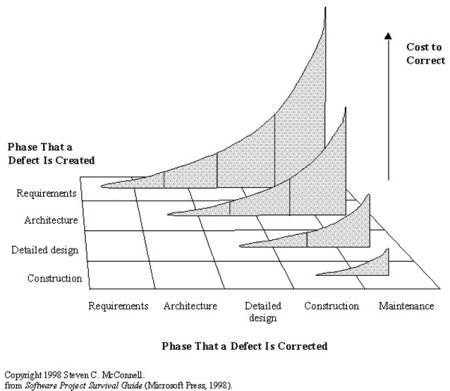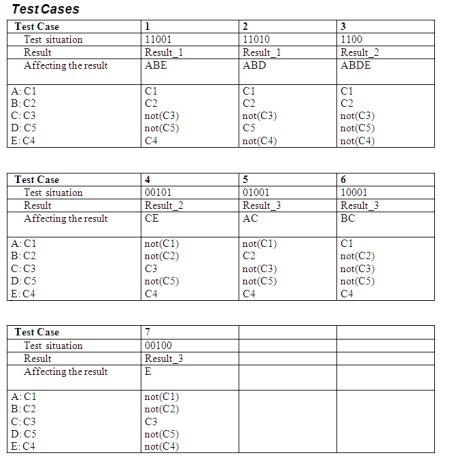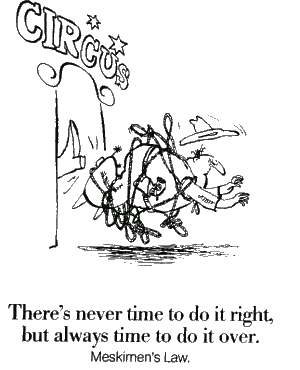Fiction or reality? On a, further nice, kind of conference meeting, I did met Ebenezer Scrooge!
I didn't know that such Scrooge-type testers do exist!

Scrooge was fully focused on finding bugs, and if I say fully, I mean FULLY !
Scrooge was completely focused on his own world, collecting as much as bugs as possible, and enjoying it with a kind of scary laughter..... I must say his test results seems to be excellent, very fast in creating test cases, and he knows and uses more test techniques, I ever did. And he has, as we say it, a nose for finding bugs. But his eyes did spit fire when I suggested helping the developers to find the bugs earlier in the cycle. "Why should I destroy my own work" Scrooge replied..... I must confess, I didn't have a response right away. I know that most of the (good) testers enjoy finding bugs. But such a fanatic ego-centric type was new and a complete surprise for me. In fact, I think that Scrooge-type testers, especially this fanatic, are a disgrace for the test profession I love.

So I tried to convince him to change his attitude. Of course I didn't succeed the remaining 15 minutes we met. Probably he needs a visit from the ghosts of the past, present and future!

For the Scrooges among us
For the Scrooges in the test world I have a message: Finding bugs can deliver applause from your surrounding and it may look that your manager is pleased with the extra test hours (he can send a bigger invoice). But in the long term no one (beside you) is happy with a Scrooge attitude. The business users don't get their systems on time, the developers won't help you if you need them, and if the project manager becomes aware of this attitude, he will kick you out (so your manager can't send any invoice at all). So broaden your small ego centric world! Adopt Application Lifecycle Management [ALM] and find bugs as early as possible in a collaborative driven attitude.
For the non-Scrooges
How do we fight this irritating phenomenon? In my opinion, the best testers are the ones helping (actively) the developers to build better software. Luckily some of the big test gurus of this world preach the same opinion (see the entry measuring testers in the weblog of James Whittaker).
Wild thought
Can we make testers responsible for the quality of the software? For instance: Is it possible to award testers depending decreasing defect rates. I think a kind of Collaboration-bonus awarding mean time between failures and/or decreasing defect rates can work! Has someone a suggestion for the formulation of such a performance indicator or Collaboration-bonus?

I'll look for some like-minded friends and give it a try in the coming period. I’m sure this entry will be continued....
And again: Suggestions are very welcome!
Rob
I didn't know that such Scrooge-type testers do exist!
Scrooge was fully focused on finding bugs, and if I say fully, I mean FULLY !
Scrooge was completely focused on his own world, collecting as much as bugs as possible, and enjoying it with a kind of scary laughter..... I must say his test results seems to be excellent, very fast in creating test cases, and he knows and uses more test techniques, I ever did. And he has, as we say it, a nose for finding bugs. But his eyes did spit fire when I suggested helping the developers to find the bugs earlier in the cycle. "Why should I destroy my own work" Scrooge replied..... I must confess, I didn't have a response right away. I know that most of the (good) testers enjoy finding bugs. But such a fanatic ego-centric type was new and a complete surprise for me. In fact, I think that Scrooge-type testers, especially this fanatic, are a disgrace for the test profession I love.

So I tried to convince him to change his attitude. Of course I didn't succeed the remaining 15 minutes we met. Probably he needs a visit from the ghosts of the past, present and future!
For the Scrooges among us
For the Scrooges in the test world I have a message: Finding bugs can deliver applause from your surrounding and it may look that your manager is pleased with the extra test hours (he can send a bigger invoice). But in the long term no one (beside you) is happy with a Scrooge attitude. The business users don't get their systems on time, the developers won't help you if you need them, and if the project manager becomes aware of this attitude, he will kick you out (so your manager can't send any invoice at all). So broaden your small ego centric world! Adopt Application Lifecycle Management [ALM] and find bugs as early as possible in a collaborative driven attitude.
For the non-Scrooges
How do we fight this irritating phenomenon? In my opinion, the best testers are the ones helping (actively) the developers to build better software. Luckily some of the big test gurus of this world preach the same opinion (see the entry measuring testers in the weblog of James Whittaker).
Wild thought
Can we make testers responsible for the quality of the software? For instance: Is it possible to award testers depending decreasing defect rates. I think a kind of Collaboration-bonus awarding mean time between failures and/or decreasing defect rates can work! Has someone a suggestion for the formulation of such a performance indicator or Collaboration-bonus?

I'll look for some like-minded friends and give it a try in the coming period. I’m sure this entry will be continued....
And again: Suggestions are very welcome!
Rob




 ( 3 / 2107 )
( 3 / 2107 )



 Application Lifecycle Management [ALM] should ensure that an organization experiences an improved "business as usual" in the event of the implementation of new and/or changed functionality. Other (older) industries can give assurance, so the ICT industry should follow (soon?). This article will, I hope, give some next steps towards adulthood, by giving [ALM] directions how to prevent costly or even lethal disasters caused by bugs.
Application Lifecycle Management [ALM] should ensure that an organization experiences an improved "business as usual" in the event of the implementation of new and/or changed functionality. Other (older) industries can give assurance, so the ICT industry should follow (soon?). This article will, I hope, give some next steps towards adulthood, by giving [ALM] directions how to prevent costly or even lethal disasters caused by bugs.  Business Continuity has for [ALM] two viewpoints:
Business Continuity has for [ALM] two viewpoints: How to prevent a major disruption caused by the implementation of a new or changed application?
How to prevent a major disruption caused by the implementation of a new or changed application?  Pillar 1: Finding Bugs AEAP (As Early As Possibly)
Pillar 1: Finding Bugs AEAP (As Early As Possibly)  Testing Requirements
Testing Requirements Collaboration is a critical success factor in preventing a major disruption caused by the implementation of a new or changed application! All parties within [ALM] have to work together in creating good test coverage from the early until the last phases of the projects. I am sure that only when the Quality Levels, Learning Cycles and Metrics are in place, a good Business Continuity risk advice can be given to ensure that an organization experiences an improved "business as usual" in the event of the implementation of new and/or changed functionality.
Collaboration is a critical success factor in preventing a major disruption caused by the implementation of a new or changed application! All parties within [ALM] have to work together in creating good test coverage from the early until the last phases of the projects. I am sure that only when the Quality Levels, Learning Cycles and Metrics are in place, a good Business Continuity risk advice can be given to ensure that an organization experiences an improved "business as usual" in the event of the implementation of new and/or changed functionality. 





 Calendar
Calendar





